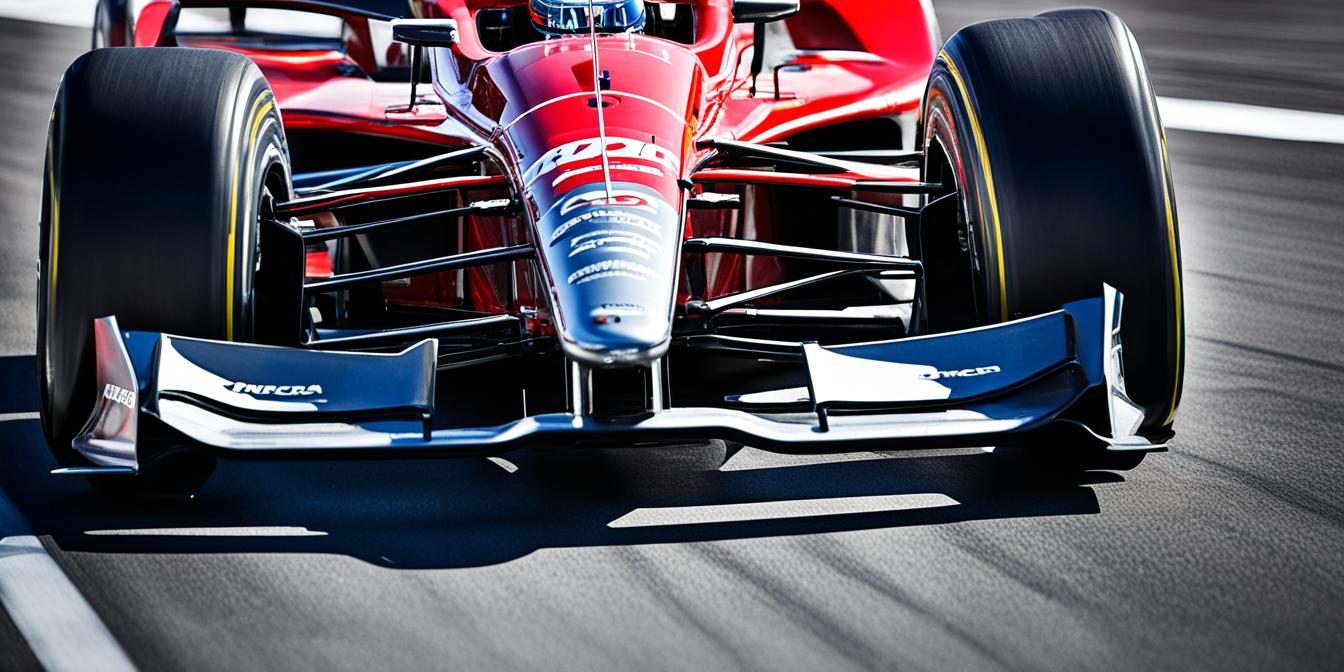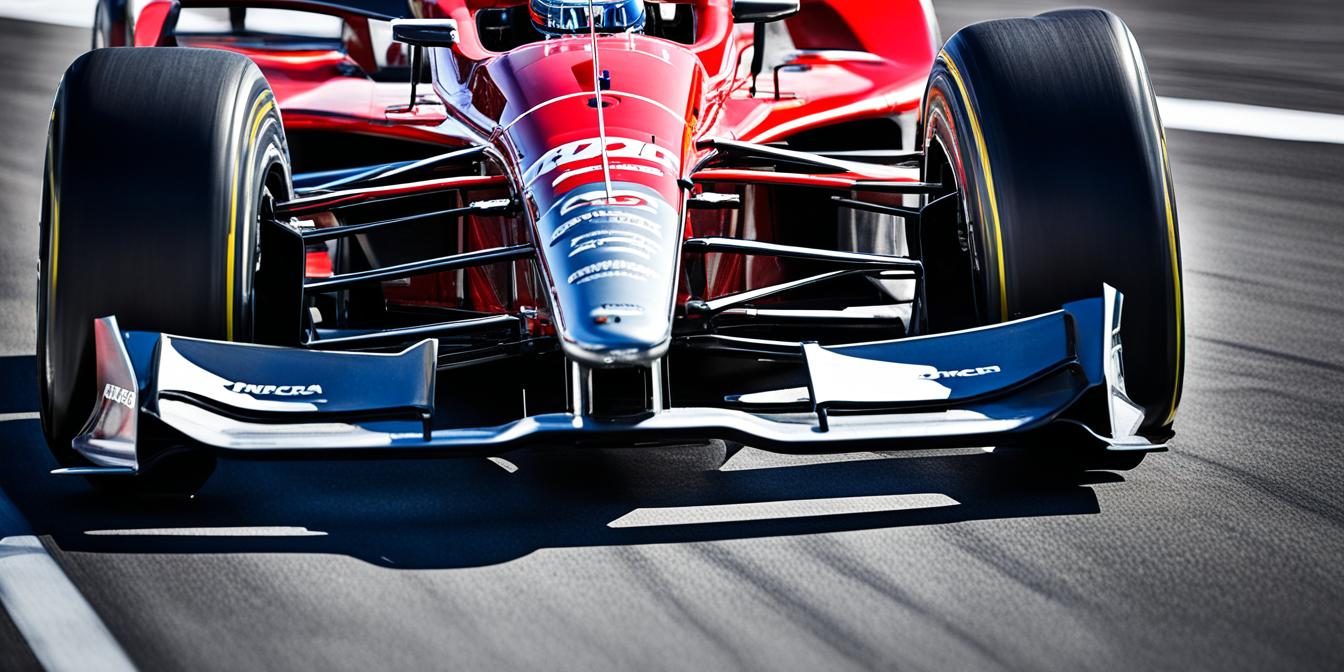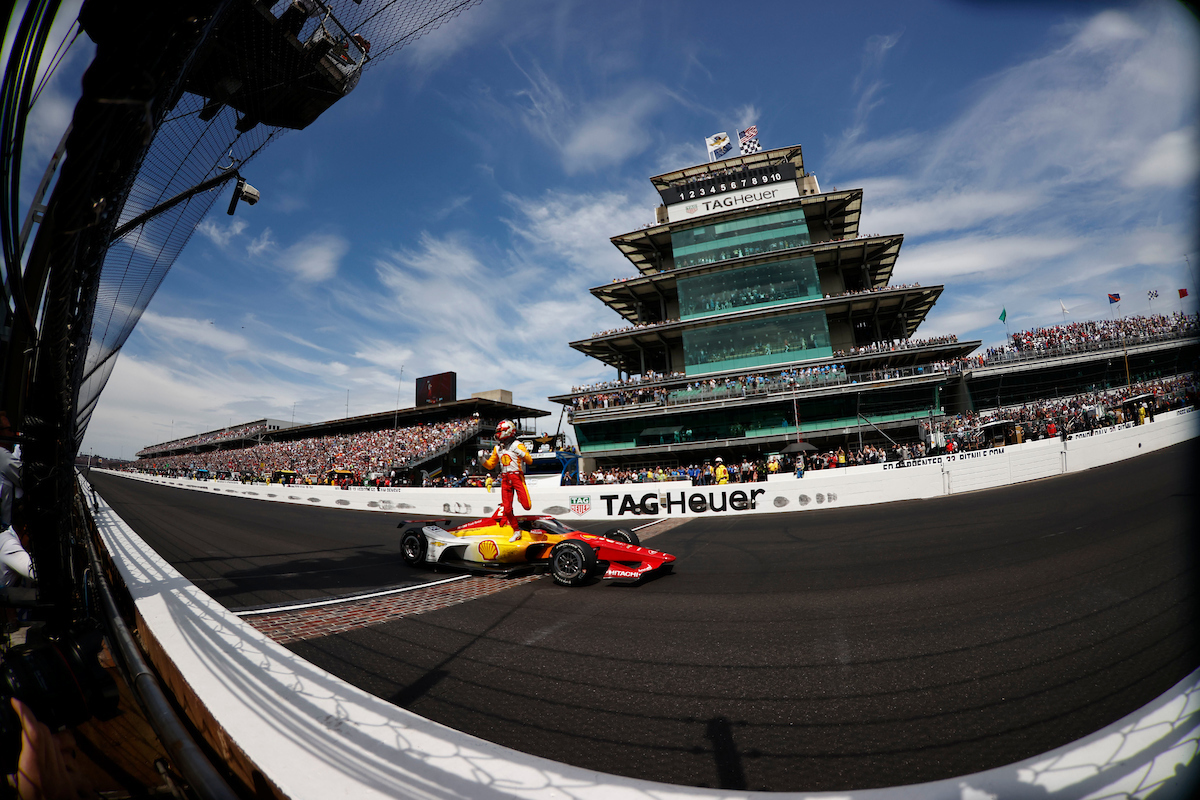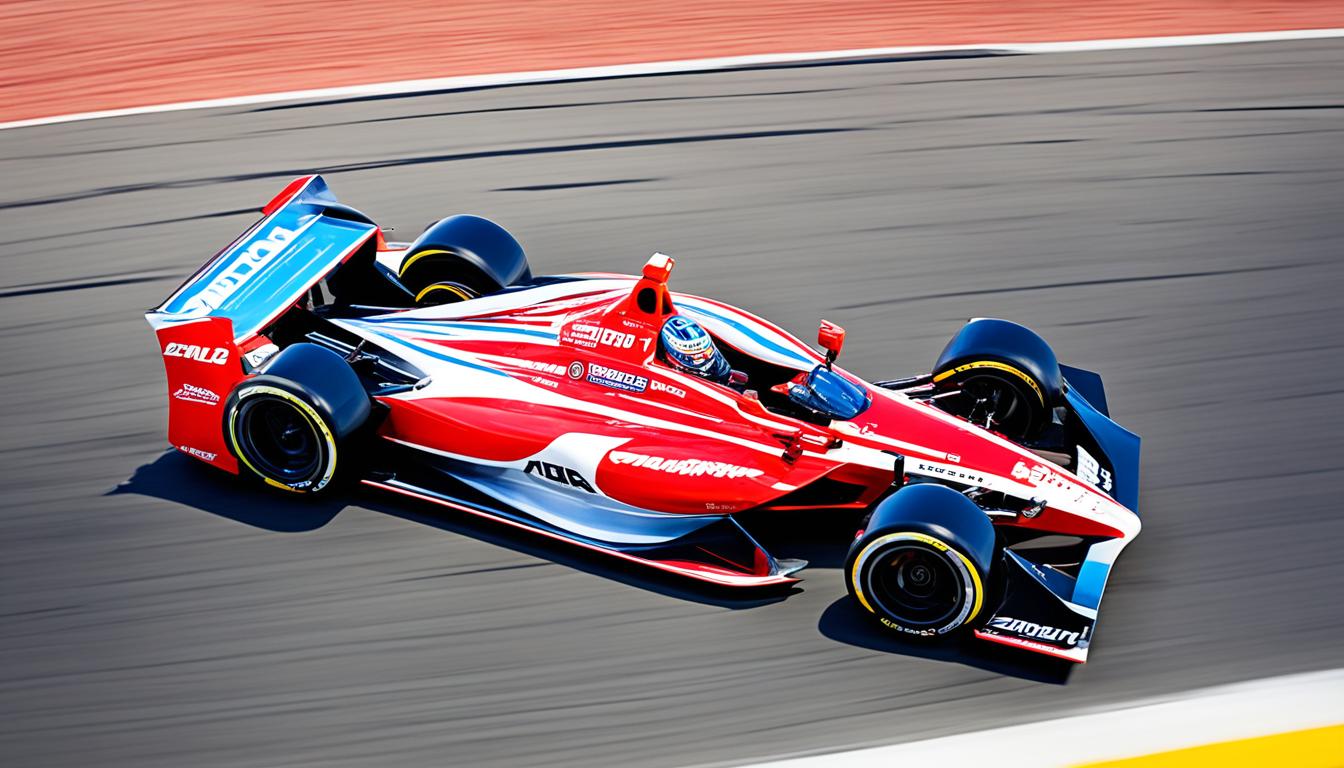IndyCar Chassis & Bodywork Insights Revealed


Ever thought about an IndyCar’s making? Each part, from the specs to the look, is made with precision. This creates a car that’s fast and powerful on the course. Let’s take a deep dive into the world of IndyCar bodywork and chassis. We’ll learn how they work and why they’re designed the way they are.
This article will explain IndyCar chassis and bodywork. You’ll find out about the materials and technology used. And, how they shape these amazing cars. Whether you love racing or are just curious, you’ll get some cool info on these high-tech machines.
Table of Contents
The Importance of Aerodynamics in IndyCar Racing
Aerodynamics are vital in the world of IndyCar racing, affecting how cars perform and compete. Knowing about IndyCar aerodynamics is necessary for teams who want to be ahead. They work on the car’s design to improve how it handles, stays stable, and takes corners.
IndyCar teams use aerodynamic principles to make cars sleek and effective. They make shapes that manage downforce and cut drag. Downforce helps the car keep its grip on the track, leading to faster turns and better stability at high speeds. By reducing drag, cars can go faster in straight lines.
The bodywork of an IndyCar includes parts like the front and rear wings, side pods, and undertray. These components are made to work together, ensuring the car finds the right balance for downforce and drag. This balance keeps the car steady and under control.
Teams spend a lot of time and effort in testing their designs in wind tunnels and with computer simulations. This helps them tweak the car’s shape to get the most out of their aerodynamics. The insights gained from these tests and simulations assist teams in making wise choices to boost their car’s performance.
Aerodynamic performance changes with each track’s conditions. IndyCar teams must adjust their car’s aerodynamics for every unique track. They adapt for things like long straightaways, tight turns, or fast sections. Being able to tweak the aerodynamics helps teams perform better in various race conditions.
The picture above shows how important aerodynamic design is for an IndyCar. It highlights the intricate design and the key role of aerodynamic elements in improving track performance.
To sum up, knowing about IndyCar aerodynamics is key to success in open-wheel racing. Teams use the right aerodynamic designs to increase downforce and decrease drag. This process improves steering, stability, and how their cars perform. Constantly improving aerodynamic performance is essential to stay ahead in the lively and competitive world of IndyCar racing.
The Evolution of IndyCar Chassis Materials
IndyCar chassis materials have changed a lot over time, making cars perform better and safer. Nowadays, carbon fiber is the main material for IndyCar chassis. It’s both light and very strong, keeping the cars in one piece even in big crashes.
With carbon fiber, car designs can be very detailed but still tough. The use of these new materials and methods has made IndyCar race cars safer and better at racing.
The Advantages of Carbon Fiber Composite
Carbon fiber has transformed the way we look at race cars thanks to its amazing features. It’s light, cutting down the car’s weight, which boosts how fast it can go, turn, and saves fuel.
It also stays strong under all the pressure of racing, thanks to its rigidity. This keeps the car running well throughout the race, no matter how hard the conditions are.
What’s more, carbon fiber is super safe for drivers. It can take away a lot of the energy from a crash, so the driver has less chance of being hurt. The material is made to break in a specific way, to keep the driver safe inside.
| Advantages of Carbon Fiber Composite | Keyword Placement |
|---|---|
| Lightweight construction | Evenly throughout the text |
| Structural rigidity | Evenly throughout the text |
| Safety features | Evenly throughout the text |
The Technical Specifications of IndyCar Chassis
IndyCar chassis follow strict rules set by the series. These rules cover the size, weight, and other important features. They make sure races are fair and safe.
Each chassis must be a specific size to keep things equal for all teams. This helps prevent one team from having an unfair advantage. It also makes checking the cars easier during races.
There are rules about how heavy the chassis can be. This is to make teams’ designs more about how well their car performs. They’re not allowed to make the car too light, just to be faster.
The suspension systems on IndyCar chassis are also controlled. This keeps the cars driving safely and consistently. Teams can adjust their own suspensions, but there are limits to keep the playing field fair.
These rules are all in place to keep the races fair. They’re about more than just winning. They’re about keeping every driver safe and making the race experience great for everyone.
Innovative Engineering Principles in IndyCar Chassis Design
IndyCar chassis use innovative engineering for top performance and safety. Engineers work hard to make cars faster and better on the track. They focus on improving aerodynamics, making the cars lighter, and upgrading how they perform.
Aerodynamic efficiency is key in IndyCar racing. Using computer models and wind tunnels, engineers tweak the design. They aim to reduce air resistance and increase downforce, which keeps the cars stable at fast speeds.
Keeping drivers safe is crucial in IndyCar. Chassis are built strong and include special areas to protect the driver. New materials and tech help cars withstand crashes and keep drivers safer than ever.
For a close look at these engineering feats, check out the table below:
| Innovative Engineering Principles | Design Features | ||
|---|---|---|---|
| Advanced Aerodynamics | – Streamlined bodywork | – Front and rear wings designed for optimum downforce and minimal drag | – Undertray for enhanced aerodynamic performance |
| Lightweight Construction | – Utilization of carbon fiber composite materials | – Reduction of overall weight for improved acceleration and handling | – Enhanced agility on the track |
| Driver Safety | – Reinforced cockpit structure | – Energy-absorbing materials to dissipate impact forces | – Enhanced driver enclosures for increased protection |
| Performance Optimization | – Innovative suspension systems for precise handling | – Advanced tire technologies for optimal grip | – Enhancements based on data analysis and feedback from drivers |
These principles keep IndyCar designs moving forward. With a focus on aerodynamics, weight, safety, and performance, IndyCars stay on the leading edge of racing tech.
Conclusion
IndyCar race cars showcase top-tier engineering and design. Every detail, from aerodynamics to chassis, plays a crucial role. Their design aims for the best performance while keeping drivers safe.
IndyCar always looks for ways to improve its cars and stay ahead in racing. They use modern materials like carbon fiber to craft strong, light vehicles. It’s this mix of creative engineering and quality materials that makes these cars so fast and dependable.
IndyCar focuses on creating bodywork that makes its cars’ shapes perfect for racing. Every inch is crafted for better handling and less resistance. This work allows drivers to take turns better and keep high speeds.
Overall, IndyCar is always at the vanguard of safety and performance. The sport is ever-changing, and fans will see better and safer cars in the future.










